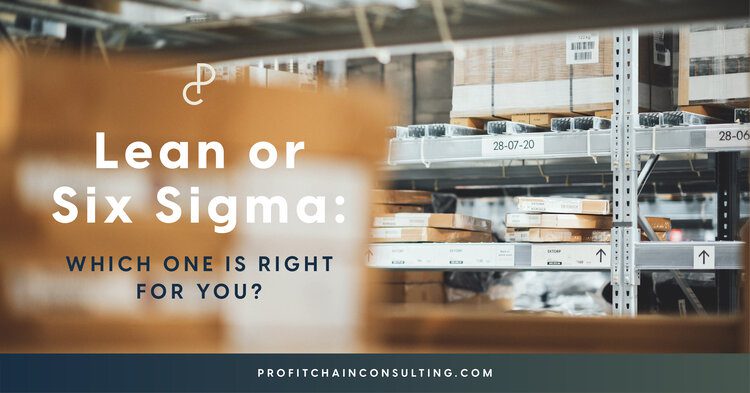In the past few years, the terms Lean Manufacturing and Six Sigma have been tossed around as companies look for proven methodologies in improving operations and reducing expense. Both approaches have been widely adopted in many industries with impressive results. There are two challenges for a small business owner: first, to understand what these two terms mean, and second, to determine which one they should choose to implement to maximize their Return on Investment (ROI). There are pros and cons of the two approaches, so let’s look at the benefits for retailers and manufacturers and how small companies can begin utilizing these methods to reduce costs.
Lean Manufacturing
Lean Manufacturing is a philosophy that looks at all business processes to eliminate waste. The “7 Deadly Wastes” are listed below.
- Transportation: Unnecessary movement of parts
- Inventory: Raw material, finished goods, slow movers
- Movement: Excessive movement of people.
- Waiting: Idle people, parts, equipment
- Overproduction: Making/buying too much
- Over-processing: Too much shipping protection, or extra coats of paint, etc.
- Defects: Non-conforming product or damaged components during manufacturing.
Targeting these “7 Deadly Wastes” should result in a 20 to 25% gain in your efficiencies!
Six Sigma
Simply put, “Sigma” is a Greek term used to describe variation, and Six Sigma is a methodology used to reduce variation. Companies seeking to improve business operations aim to reduce the variation in their processes’ output. In other words, provide more consistent and predictable products or services.
Imagine that Starbucks’ coffee-making process is full of variation, and your coffee tastes different every time you stop by to grab a cup. Would you go back to Starbucks again? Similarly, if you have wide variations in furniture manufacturing processes, the distribution centers, or the showrooms, customers will receive inconsistent service and product quality. Providing more consistent merchandise quality and predictable delivery service will improve the customer experience while reducing unnecessary expenses associated with handling product returns and price concessions.
In short, Lean is about eliminating waste, while Six Sigma emphasizes consistent product quality and service. Both approaches are intended to improve quality and service while driving operational efficiency. So, which one is right for you? Well, it depends on the current state of your business processes and what you would like to achieve. But you probably will benefit from either one!
Read more about supply chain topics in our HFA Supply Chain Hub.













